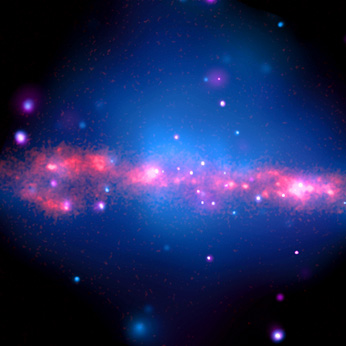- _______ Hamlet > Act III, scene II
HAMLET: Do you see yonder cloud that's almost in shape of a CAMEL?
LORD POLONIUS: By the mass, and 'tis like a CAMEL, indeed.
HAMLET: Methinks it is like a weasel.
LORD POLONIUS: It is backed like a weasel.
HAMLET: Or like a WHALE?
LORD POLONIUS: Very like a WHALE.
----------------------------------------------------http://en.wikipedia.org/wiki/Artiodactyla wrote:
<<The even-toed ungulates form the mammal order ARTiodactyla, the group that contains the pigs, peccaries, hippopotamuses, CAMELS, deer, giraffes, pronghorn, antelopes, sheep, goats, and cattle. Cetaceans and even-toed ungulates have been placed in CetARTiodactyla as sister groups, although DNA analysis has shown cetaceans evolved from within ARTiodactyla. The most recent theory into the origins of hippopotamidae suggests that hippos and WHALES shared a common semi-aquatic ancestor that branched off from other ARTiodactyls around 60 million years ago. This hypothesized ancestral group likely split into two branches around 54 million years ago. One branch would evolve into cetaceans, possibly beginning with the proto-WHALE Pakicetus from 52 million years ago with other early WHALE ancestors collectively known as Archaeoceti, which eventually underwent aquatic adaptation into the completely aquatic cetaceans.>>
http://apod.nasa.gov/apod/ap090502.html wrote:
Explanation: <<NGC 4631 is a big beautiful spiral galaxy. Seen edge-on, it lies only 25 million light-years away in the well-trained northern constellation Canes Venatici. The galaxy's slightly distorted wedge shape suggests to some a cosmic herring and to others its popular moniker, The Whale Galaxy. Either way, it is similar in size to our own Milky Way. In this gorgeous color image, the galaxy's yellowish core, dark dust clouds, bright blue star clusters, and red star forming regions are easy to spot. A companion galaxy, the small elliptical NGC 4627, is just above the Whale Galaxy [Captain Ahab? - Neufer]. Out of view, off the lower edge of the picture lies another distorted galaxy, hockey stick-shaped NGC 4656. The distortions and mingling trails of gas and dust detected at other wavelengths suggest that all three galaxies have had close encounters with each other in their past. The Whale Galaxy is also known to have spouted a halo of hot gas glowing in x-rays.>>

<<NGC 4631 as seen edge-on from NASA's Chandra X-ray Observatory and Ultraviolet Imaging Telescope (UIT). The Chandra data (shown in blue and purple) provide the first unambiguous evidence for a halo of hot gas surrounding a galaxy that is very similar to our Milky Way. The orange color in the middle of the image represents ultraviolet radiation as observed by UIT, tracing massive stars in the galaxy. Scientists have debated for over 40 years whether the Milky Way has an extended corona, or halo, of hot gas.>>
----------------------------------------------------
----------------------------------------------------http://en.wikipedia.org/wiki/NGC_4631 wrote:
<<NGC 4631 contains a central starburst, which is a region of intense star formation. The strong star formation is evident in the emission from ionized hydrogen and interstellar dust heated by the stars formed in the starburst. The most massive stars that form in star formation regions only burn hydrogen gas through fusion for a short period of time, after which they explode as supernovae. So many supernovae have exploded in the center of NGC 4631 that they are blowing gas out of the plane of the galaxy. This superwind can be seen in X-rays and in spectral line emission. The gas from this superwind has produced a giant, diffuse corona of hot, X-ray emitting gas around the whole galaxy.>>
ARTiodactyl Neuendorffer